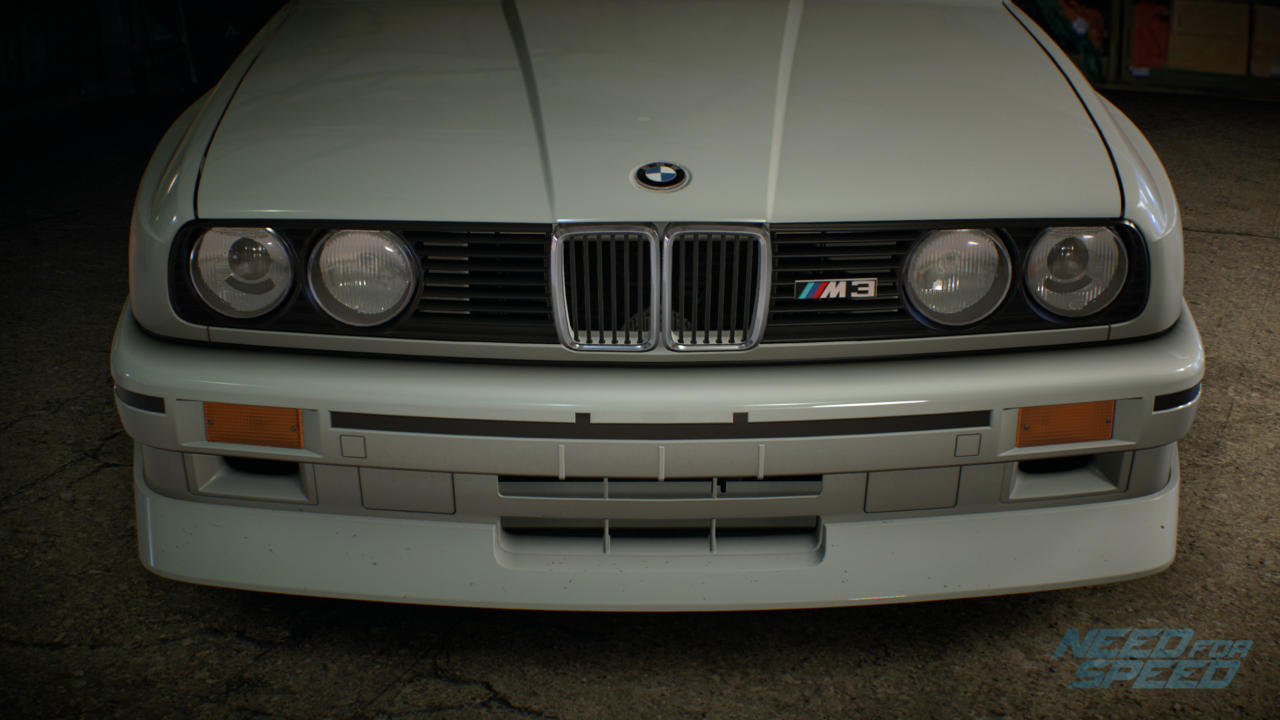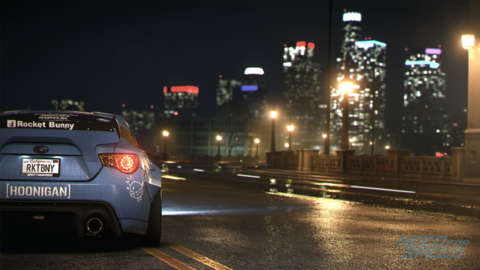One of our Needs For Speeds is missing! Or it has been. 2014 marked the first year since 2001 where EA decided against celebrating illegal street racing with its longstanding series.
Need For Speed has been, to some extent, a victim of its own success, lashed to an annual release schedule by its own popularity, too lucrative not to give to all the boy and girl racers every Christmas. And that’s fine, when you’re riding the momentum of a hot underground scene firing into mainstream consciousness, but downright tricky, a few years later, when your game needs to pause, reflect, and find itself.
That’s more or less the process described by Marcus Nilsson, executive producer at Ghost Games, whose current objective is to restore credibility to the once-dominant franchise. And so, having delivered Rivals in time for the launch of PS4 and Xbox One (a solid but unspectacular release that underlined a need for a pause) Ghost Games has been given an extra year to retune the series, give it a new exhaust, and fit it with neon underlighting.
Nancy Drew: Mystery of the Seven Keys | World Premiere Official Trailer Modern Warfare III & Warzone - Official Cheech & Chong Bundle Gameplay Trailer The Fallout TV Show's Biggest Easter Eggs Teenage Mutant Ninja Turtles: Splintered Fate – Announcement Gameplay Trailer Dead Island 2 – Official SoLA Expansion Gameplay Launch Trailer SteamWorld Heist II – Official Reveal Gameplay Trailer Harold Halibut GameSpot Video Review Little Kitty, Big City – Release Date Reveal Cat Quest III - Release Date Trailer LORELEI AND THE LASER EYES | Release Date Trailer Honkai: Star Rail — "Non-Zero-Sum Game" | A Moment Among the Stars Animated Trailer Stellar Blade - Official Live Action Release Date Trailer| PS5
Please enter your date of birth to view this video
By clicking 'enter', you agree to GameSpot's
Terms of Use and Privacy Policy
"There is a campy 'we’re in a video game' feel that never goes away, but that also gives the story a heightened, soapy sense of fun."
It’s in the name of credibility then, that the new game is called simply "Need For Speed," a steadfast and true statement of intent. It’s also presumably in the name of credibility that this Need For Speed features new live action cut-scenes, as well as interludes featuring real actors set against the driving action, both of which I was initially very sceptical about. Years ago, such live action transitions meant you’d probably wasted fifty bucks on a terrible Mega-CD game. But after three or so hours with Need For Speed, and subjected to the flesh-and-blood people therein, I’m willing to admit my scepticism might be misplaced (although I'm still right about the Mega-CD).
The real-world dramatics present a story involving five people, who our unseen hero wins the affections of by driving very fast at night (the game is set entirely between the hours of dusk and dawn, a beeped-horn-salute to the series’ night-racing heyday). These short scenes, triggered after certain events and when you arrive at certain locations, are all shot in first-person, with the cast choreographed to move around you, touching, flirting, keeping you centred. Because our hero is silent, these friends are also experts at reading body language and singlehandedly holding conversations. There’s a campy “we’re in a video game” feel that never goes away, but that also gives the story a heightened, soapy sense of fun.
Aside from cutscenes, these new friends also appear while you’re driving the open roads of Ventura Bay. They ring you, a lot, popping up on your in-car HUD. Really these calls are prompts for new events, and a big reason the live-action cast doesn’t fall flat is that the Pepsi commercial theatrics are tied right into gameplay, with each of the characters representing one of Need For Speed’s five different play styles and associated event types.

So Spike, the eager trust-fund kid who introduces you to the group, will call you with new "Speed" events, which are straightforward go-fast races and point-to-points. Other events are grouped into "Style", which is drifting, jumping, and general flashiness. Then there's "Build," which is customisation, "Crew," which puts an emphasis on team events using online play, and "Outlaw," which focuses on the police chases of many Need For Speeds gone by.
This five-sided approach is how order is imposed on the open-world of Need For Speed. Plot lines and event types pursued with each character eventually lead to the inclusion of what the game calls "Icons," which are big names in street racing whose careers and reputations fit with one of the headline ways to play (so Tokyo street-racer Morohoshi-san plays "Outlaw", while professional car-acrobat Ken Block plays "Style"). As design would have it, five is also the number of cars that can be kept in your garage at any given time. So, if you’re organised, you could have a car tuned specifically for each style, and that’s important because it brings us on to the central and important thing about Need For Speed, which is customisation.
Ghost Games has clearly spent time thinking hard about what to do with Need For Speed, about the big decisions that will shape its next game and hopefully define it as a classic, credible Need For Speed title. Customisation is key to this. Whatever path you follow in this open-world racer, the central route of progression involves winning events, unlocking parts, then slowly building your car into a monster both inside and out.
"The car customisation system is deep and complex, and also, perhaps more surprisingly, the emotional focus of the game."
The system is deep and complex, and also, perhaps more surprisingly, the emotional focus of the game. Craig Sullivan, creative director at Ghost Games, explains that the team wanted to get away from progression systems which unlock faster cars every couple of events and effectively force them onto the player. “We want the cars to be more like pets” he says, only half-joking. Customisation makes it possible to keep old favourites for the entire game, if you like, hollowing them out and filling them with chrome-plated nuclear fission devices (or at least, you know, nitros) to keep them competitive.

Sullivan is also a Criterion veteran, and on the key issue of handling, his new team had to decide whether to follow that studio’s Burnout, Hot Pursuit and Most Wanted model of deliriously easy drifting--tapping the brake to slide sideways, forever--or the more reality-tuned driving lines and relative discipline of Rivals. Thanks to the customisation system, Ghost Games decided on both. The focus of performance tuning moves the handling from one to the other, either through a big, friendly master slider, or more detailed custom set-ups with specific settings for tyre inflation and wheel responsiveness. In my time with the game I never quite found the sweet-spot; I could make my car go fast and straight, but drifting events were still a frustration of too tight or too loose, and never quite just right.
The concept of deep customisation is very much the good news. The bad news is, during my limited time with the game, I didn’t have enough opportunity for a firm feel on how substantial the customisation is. This is good in an obvious way, because it is at least substantial enough that three hours does not touch the sides (I spent half an hour in the pleasingly sophisticated car wrap editor, messing with cat decals and figuring out how the image layer system worked). And bad news because, at least in these early hours, the events themselves seemed a little unremarkable, and a little hard to tell apart. Customisation, and the emotional process of adopting five cars and making it your own has to be compelling enough to be the sustained draw of this game.



















